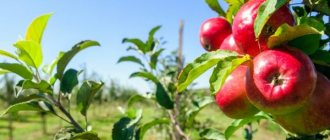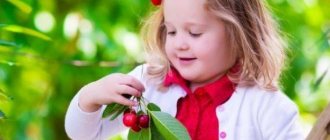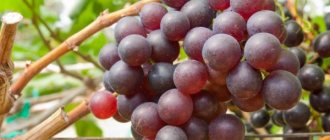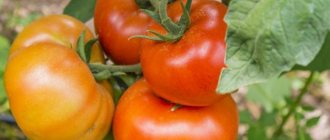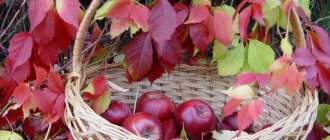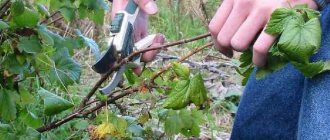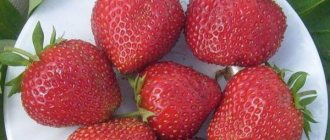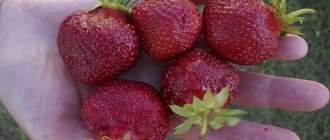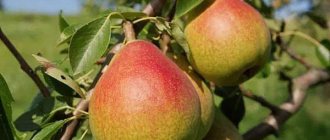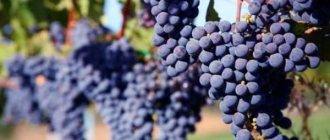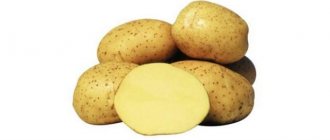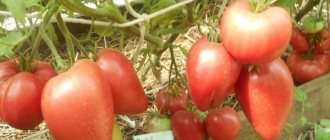Description of culture
The description of Soneika cherry plum is as follows:
- The tree has the shape of a flattened circle. Its height does not exceed three meters.
- The crown is not very dense, the branches are inclined downwards.
- It has oval pointed leaves and white flowers.
- Plums are yellow with a red side, weighing up to 50 g, sweet, slightly sour.
- Productivity 30-40 kg.
- The pulp is yellow and juicy.
The cherry plum variety is winter-hardy and can be planted in central Russia and Belarus. The photo of Soneika cherry plum below allows you to get acquainted with this plant.
Further care
The agricultural technology of Soneika cherry plum is not much different from the rules for growing other fruit crops. In the first years after planting, it is important to correctly form the crown of the tree, promptly water, loosen and clear the soil of weeds in the tree trunk circle.
Watering mode
Young trees need to be watered frequently in the first year after planting: 4–5 times per season at the rate of 2 buckets per tree.
Mature fruiting trees are moistened 2-3 times per season. The last watering (in dry autumn) is carried out in mid-October.
How to feed a tree
Cherry plum is especially responsive to the application of organic fertilizers. In the first year, the tree is not fed, provided that fertilizers have been added to the planting hole. Then the feeding scheme is as follows: 2 years with organic fertilizers, in the 3rd year - full mineral fertilizer.
Fertilizer doses are calculated per m2 of tree trunk circle: organic 3–5 kg, mineral 5–7 kg.
Trimming
Pruning cherry plums comes down mainly to thinning - removing diseased, broken, dry and unnecessary branches that thicken the crown, and shortening long annual growths.
When, with the age of a tree, the yield is noticeably reduced, the progressive growth slows down or is shortened, anti-aging pruning is used. Shortening the ends of skeletal and semi-skeletal branches on 3-4 year old wood.
Care and loosening of the tree trunk circle
The soil is loosened in spring, summer and autumn, as well as after watering and rain, fertilizing, and before mulching.
Keeping the tree trunk circle free from weeds ensures maximum retention of moisture in the soil.
Preparing for winter
At the end of leaf fall, trees are sprayed with Bordeaux mixture to protect against bacterial necrosis. Water-charging irrigation is carried out. Mature trees are whitewashed, young trees are tied with light fabric (spandbond, burlap). Thin out the crown. Fertilizers are applied to the tree trunk circles for digging.
Seasonal treatments
Before the buds swell (April), spray with 3% Nitrafen against wintering pests.
Before flowering (beginning of May), spray with 1% Bordeaux mixture (0.5 Zineb) and Fufanon, Intavir against monilial burn, aphids and leaf-eating pests.
Three weeks after flowering, repeat treatment with 1% Bordeaux mixture (0.5% Captan, 0.5% Zineb).
After harvesting (August), spray the trees with Fitoverm and Lipedocide against the slimy sawfly.
Characteristics
Let's consider the main characteristics of the Soneika cherry plum variety.
Drought resistance, winter hardiness
Cherry plum has good winter hardiness and can withstand frosty winters without loss. Sudden temperature changes in February are dangerous for fruit buds.
As the ancestor of plums, a drought-resistant plant. However, watering will give a higher yield and juicy fruits.
Pollination, flowering period and ripening time
Like a plum, it requires a pollinator to produce fruit, and varieties are chosen that bloom at the same time as it. The best pollinator for Soneika cherry plum is Eastern European varieties of plums. Blooms with white flowers in May. The fruits ripen at the end of August.
Productivity, fruiting
The variety is early-fruiting, high-yielding, up to 40 kg of berries are collected from one tree. Ripening occurs almost simultaneously, which reduces the harvest time. The first fruits appear two years after planting.
Area of application of fruits
Cherry plum fruits are used fresh. They are well transported and stored for a long time. They are used to make preserves, compotes, jams, and add them to culinary products. It is used in cosmetology in the preparation of creams, shampoos and other cosmetics.
Resistance to diseases and pests
Hybrid plants have good resistance to harmful insects and diseases. The variety is immunized to clasterosporium blight.
Advantages and disadvantages
Advantages of the hybrid cherry plum variety Soneika:
- High yield.
- Early start of fruiting.
- The tree is compact.
- Winter-hardy.
- Drought resistant.
- Resistant to diseases.
The disadvantage is the need to install supports for branches strewn with fruits and the presence of other varieties for cross-pollination.
Landing Features
The plant requires certain conditions for good growth and fruiting.
Recommended timing
The best time to plant cherry plum is spring; the plant has time to take root before the onset of cold weather.
Attention! It is important to remember that cherry plum is planted in a dormant state, when the buds have not yet begun to bloom.
Autumn planting of cherry plum is acceptable; it should be no later than mid-September, a month before the onset of frost. If it grows late, the roots will not have time to take root and the plant may die.
Cherry plum variety Gek
Hybridization of the Chinese plum and cherry plum Otlitnitsa gave the result in the form of the cherry plum variety Gek in the early 90s of the twentieth century. A tree with an average ripening period and a fruit weight of up to 35 g. The pulp is of low juiciness, yellow in color, like the fruit shell, sometimes a soft pink blush is observed.
The fruits have good taste, are resistant to transportation, a high-yielding variety, consumed fresh and used for preservation.
The disadvantage of the Gek cherry plum is that the seed is poorly separated, there is instability to diseases (gray rot), it requires systematic pruning and constant care.
Selection and preparation of planting material
For planting, one-year and two-year-old seedlings are used. The root system should consist of 5 main roots 30 cm long and be well developed. You can use grafted plants; they begin to bear fruit faster.
Before planting, inspect the roots, remove diseased and damaged ones, and shorten the rest. Their cut color should be white.
The roots should be saturated with water. They are placed in a solution with disinfectant additives to eliminate possible diseases.
Landing algorithm
The tree is compact, 3 meters are left between seedlings, 4-5 meters are enough between rows.
Planting holes are prepared with a depth of 0.8 meters, their width is up to 0.7 m, depending on the fertility of the soil. On poor soils, add humus or compost to the hole and sprinkle with complex fertilizer. On acidic soils, add ash, lime or dolomite.
On clay soils, drainage is made from crushed stone, brick or coarse sand. If the soil is sandy, add a layer of clay to the bottom of the hole.
The root collar of the cherry plum is not buried; it is left at ground level. This is especially true for grafted seedlings, so that wild shoots of the rootstock do not begin to grow and drown out the cultivated shoots.
Subsequent care of the crop
Growing Soneika cherry plum requires compliance with certain rules. Basic requirements for crop care:
- Watering.
- Feeding.
- Trimming.
- Preparing for winter.
- Protection from rodents.
Watering is required in spring and summer, up to three times per season. During the dry season, 4 liters are poured under the cherry plum tree. Be sure to water in September to provide moisture to the root system for the winter.
In the first year, the nutrition added to the planting holes is sufficient. Subsequently, fertilizing is applied in March, in the summer during the period of appearance and growth of ovaries. The last feeding in August is needed to set the buds of the next harvest. It is better to apply complex compounds, only to exclude nitrogen in the fall.
In the fourth year, cherry plum will require the application of organic fertilizers, as well as phosphorus-potassium fertilizers. They are added when loosening the soil in autumn.
In the first year, the tree crown is formed. Leave up to 5 skeletal branches. Subsequently, second- and third-order branches and crown density are formed.
The main pruning of cherry plums and plums is done in the spring before the start of sap flow in March and April. Summer pruning can only be sanitary, in which dry and unnecessary branches are removed.
To get a visual representation of the tree trimming process, you can watch the video:
The Soneika cherry plum variety is winter-hardy, but requires some preparation for winter. Young seedlings are hilled and mulched with humus. They need to provide shelter from rodents. To do this, the trunk is wrapped in burlap and covered with spruce branches.
Soneika is a hybrid variety of cherry plum
The Belarusian selection variety, Soneika cherry plum, was obtained by crossing the Mara variety with a mixture of pollen from diploid plum varieties. Cherry plum is a hybrid, has cold resistance and immunity to diseases such as clasterosporiasis.
Description of cherry plum
The tree is low-growing, has a flat-rounded crown and medium density, the branches are inclined. The leaves are oval, large, with a sharp end. Blooms with white buds. The first fruits are at the end of August. The productive cherry plum variety Soneika brings up to 15 tons per hectare.
Description of fruits
The fruits are bright yellow with a red blush, round in shape, average berry weight is 50 g. The peel is strong and thin with a slightly noticeable abdominal seam. The pulp is yellowish, juicy and spicy. The taste of cherry plum is sweet and sour. The bone does not come away from the flesh.
Growing
The variety is characterized by high yield, so the branches need support. The crop begins to bear fruit early: in the second year after planting. The tree does not grow. It is small, so it is convenient to collect ripe fruits.
Cherry plum is winter-hardy and does not freeze even at –30 °C. This variety is disease resistant.
The Sonyika variety is not very demanding on growing conditions: a relief area, soil, and black soil are suitable for it. On soils with humus and soils supplied with water, fruits are much larger and tastier.
The most favorable soil acidity for growing this variety is 6.5-7.5 pH. On acidic soils, liming is performed at a dose of 200-300 g/m2. For this use:
The fruits ripen at the same time, so the harvest is harvested once per season. The fruits do not require sorting due to the absence of insects. Cherry plum is well transported within a couple of days. Most of the berries are consumed fresh, the rest of the fruits are used to make compotes and jam.
Proper care
Young seedlings need constant high-quality watering.
Organic mulching is also carried out with a layer of 7-10 cm. For cherry plum, pruning during planting is desirable. Then every year the affected, dry or overgrown shoots are cut off. Weeding near the tree will ensure shallow loosening of the soil and the formation of the crown.
Reproduction
This variety of cherry plum can be grown from a seed, but more often it is propagated by cuttings. An effective way is vaccination. It is made in the spring from cuttings on unopened buds. It is convenient to pin the shoot into the plum crown. If several varieties are grafted onto one plant, pollination will increase and fruits will appear within a year. It will look great: there are red fruits on one branch, yellow fruits on the second, and burgundy fruits on the third. Cherry plum grown from plum varieties is winter-hardy.
Fertilizer
Cherry plum Soneika needs additional feeding. It needs to be fertilized three times a year: in early spring, in mid-summer during the growth of ovaries, and at the end of summer. After this, it will give a good yield.
Under small seedlings, it is better to sprinkle 2.55 cm thick of rotted droppings or compost, but so that the trunk remains clean. In the summer, be sure to feed Soneika cherry plum with phosphorus or potassium fertilizers.
For better pollination, it is recommended to plant 2-3 species at once. During flowering, the tree is very beautiful, so it is used in gardens and landscape design.
Diseases and pests
It would not hurt to protect plums and cherry plums from pests before the sap begins to flow (for the North-West this is the beginning of April). Trees are susceptible to disease and insect damage. Some cherry plum diseases are a consequence of the influence of parasites.
- plum plum;
- plum sawfly;
- hawthorn;
- codling moth;
- plum pollinated aphid.
Prevention and treatment
To spray plants and soil in the garden, 700 g of urea is diluted in 10 liters of water. Using this product you can remove all the pests that remained on the tree and under it for the winter. To avoid causing burns to mature buds, do not spray the plant later than expected. Use preparations such as Iskra-bio, Healthy Garden, Aurum-S once a month. This is enough to get rid of pests.
Simultaneously with the treatment of trees, the garden is pollinated with solutions of Zircon or Ecoberin. They increase the resistance of plants and trees to diseases and adverse weather conditions.
For growing and breeding cherry plum, information related to the description of the variety will be useful. To get a big harvest, it is enough to put your knowledge into practice.
Diseases and pests, methods of control and prevention
The Soneika cherry plum variety is resistant to many diseases, but they still exist.
| Disease or pest | Characteristic | Fighting methods |
| Hole spot | The appearance of brown spots on plum leaves, the formation of holes in them. The disease then spreads to fruits and branches. The bark cracks and gum begins to ooze | Treatment of the tree with a 1% solution of Bordeaux mixture or the preparation "Hom" before flowering and after and three weeks before harvesting the fruits. Remove plant debris promptly |
| Coccomycosis | The appearance of a powdery pink coating on the leaves, drying of the fruits of the plum | Treatment of plants with Bordeaux mixture in spring and autumn, treatment of trunk circles in autumn |
| Moniliosis | The branches darken, the leaves dry out and fall off, the fruits become covered with rot. | In the spring, before the buds swell, spray with a 3% solution of Bordeaux mixture; in the summer and after harvesting, use a 1% solution |
| Fruit mite | Damages leaves and fruit buds, causing them to fall off | Clear the branches of old bark in a timely manner; in case of disease, use “Fundazol” or “Karate” when forming buds |
| Plum aphid | Damages shoots and leaves of plums and cherry plums, after which they dry out | Treatment of leaves with insecticides, especially their lower parts |
Cherry plum Soneika, while retaining the beneficial qualities of plums, has a pleasant taste. The hybrid variety is disease resistant and has a compact shape. A tree that blooms beautifully in early spring will decorate the entire garden.
Aftercare of the tree
Like any plant, Soneika cherry plum requires compliance with certain rules for caring for it. If you follow watering, pruning, disease prevention, and take care to endure the cold months, then the plum will delight you with a large harvest.
Watering and fertilizing
While the plum is young, it needs to be watered more often. Irrigate 2 times a week with 1 bucket of water. During the dry period, watering is increased to 1.5-2 buckets per day, 3 times a week.
Important! It is impossible to overwater the plant, this causes rotting of the roots and reduces immunity. Cherry plum may die .
Fertilizing is done three times a year. Early spring, mid-summer, late summer. Humus is used for these purposes. Sonya loves phosphorus and potassium mineral fertilizers.
